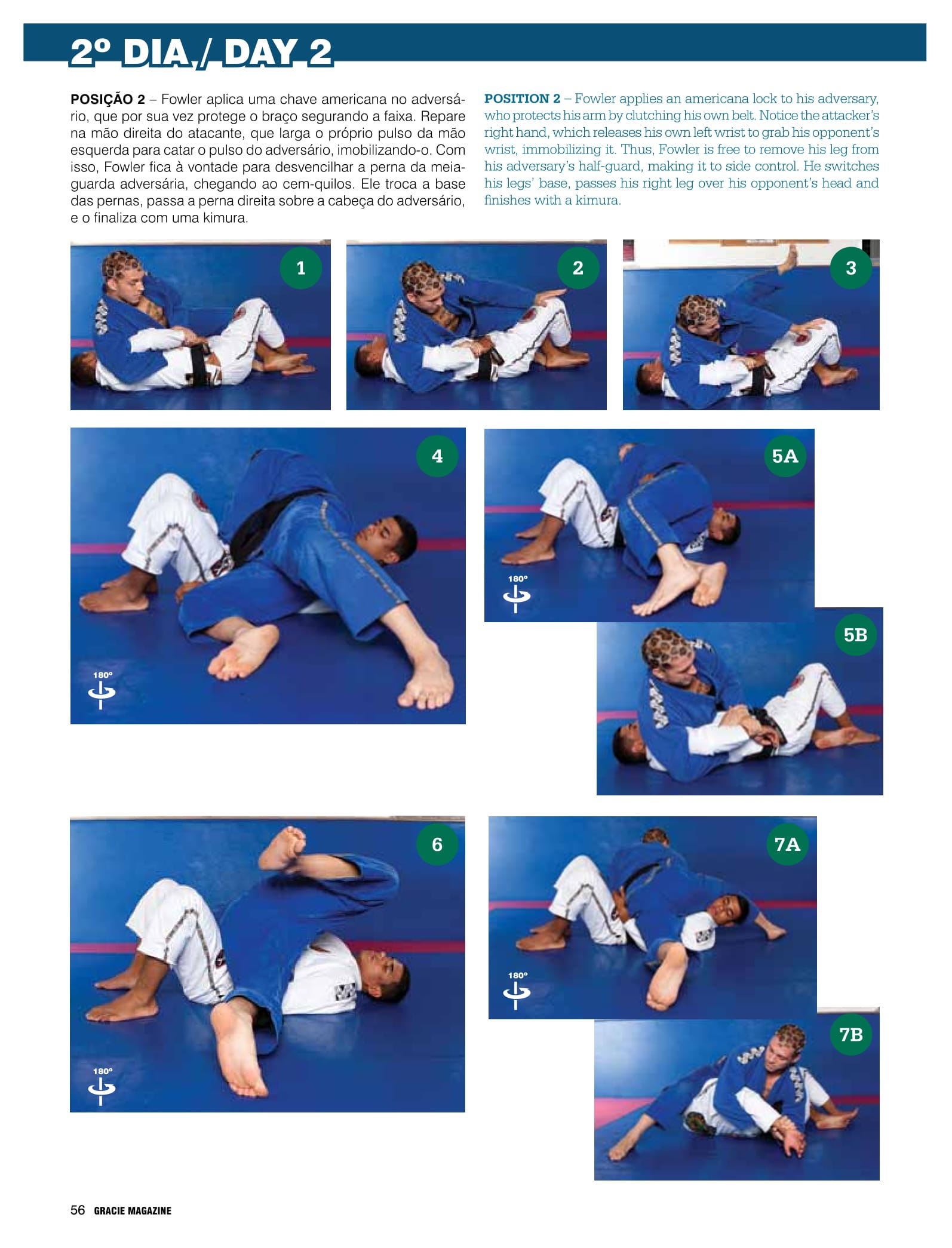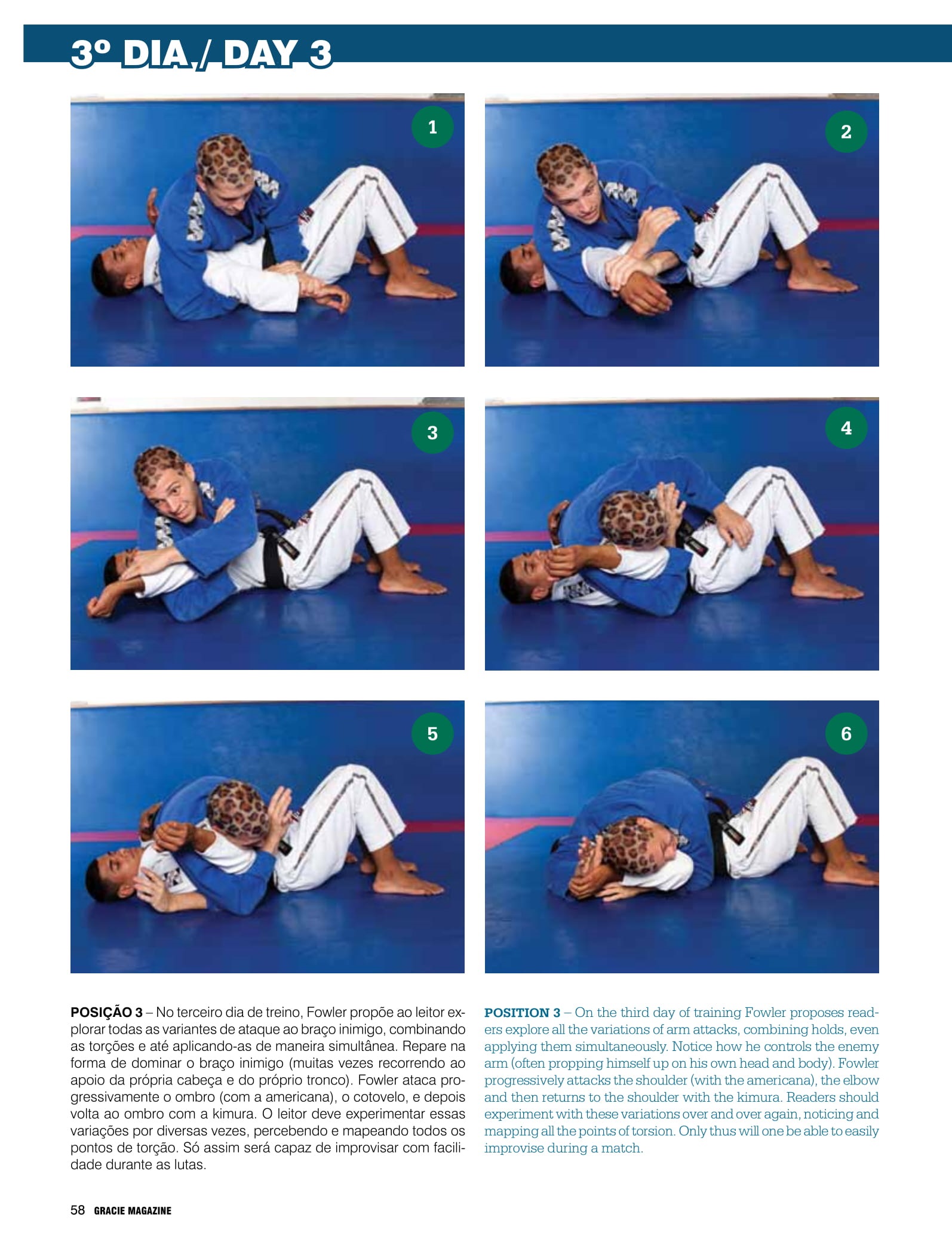[First published in 2009. Scroll all the way down for plain text.]








Text: Raphael Nogueira / Photos: Gustavo Aragão
Training program
REACH HALF-GUARD WITH GUNS BLAZING
A lot of passers just think to finish once they’ve reached side control. Mike Fowler loads the arms of those unwilling to wait so long
In July, when in Brazil to dispute the Rio Open 2009 (a tournament in which he won bronze at middleweight), Mike Fowler accepted an invitation from GRACIEMAG to put together a training program for our pages. The American black belt was at complete liberty to choose the techniques to teach. He opted for attacking variations for the top player in half-guard. “I’d like for readers, before practicing the moves, to reflect on the joints in the arm (wrist, elbow and shoulder) and the leg (ankle, knee and groin). In recognizing these attack points, the player comes to create, combine and improvise on moves in infinite ways,” explained Fowler, during a photo session at Tatá Duarte’s academy, in Barra da Tijuca. Jonattan “JT” Torres collaborated as training partner.
***
Day 1
Position 1 – Upon stabilizing himself in the half-guard, Fowler places his left hand on his adversary’s right knee, thus creating a point of support with which to free his trapped leg. His intention is to progress to side control or even the mount. The fighter on bottom tries to remove the point of support, defending with his right arm. It is at this moment that Fowler launches his attack on the enemy arm, first with a wrist lock, then going on to extend his opponent’s arm parallel to the mat and attack the elbow. Or in other words, he sinks two locks (wrist and elbow) with one hold.
Day 2
Position 2 – Fowler applies an americana lock to his adversary, who protects his arm by clutching his own belt. Notice the attacker’s right hand, which releases his own left wrist to grab his opponent’s wrist, immobilizing it. Thus, Fowler is free to remove his leg from his adversary’s half-guard, making it to side control. He switches his legs’ base, passes his right leg over his opponent’s head and finishes with a kimura.
Day 3
Position 3 – On the third day of training Fowler proposes readers explore all the variations of arm attacks, combining holds, even applying them simultaneously. Notice how he controls the enemy arm (often propping himself up on his own head and body). Fowler progressively attacks the shoulder (with the americana), the elbow and then returns to the shoulder with the kimura. Readers should experiment with these variations over and over again, noticing and mapping all the points of torsion. Only thus will one be able to easily improvise during a match.
Day 4
Position 4 – Fowler controls the right arm of his opponent, who slides out his hip and tries for the sweep. It is at this instant that the passer switches the direction of attack, spinning on his own axis, using his right leg to rotate about 180 degrees. Instead of the arm, the target is now the enemy leg. Fowler catches his partner’s right leg with both hands and projects his own body forward, diagonally (notice the angle). Also notice how he uses his feet to control his teammate’s left leg. Now all he has to do is yank out the knee bar, pulling his adversary at the ankle.
Day 5
Position 5 – To end the Training Program, Fowler teaches a variation on the move he showed on day four. The move’s progression is very similar: the passer leads the guard player to believe he is going for the arm, but switches the direction of attack. He spins on his own axis, using his right leg to turn about 180 degrees. He grabs a hold of his sparring partner’s right leg, but now, instead of a knee bar, applies an americana. His body is projected diagonally, which makes it very hard for his opponent to defend. While squeezing out the hold, Fowler can begin a somersault, increasing the pressure of the attack. As a result, his opponent will feel pressure on the knee. Once again a double lock is in place: on the knee and ankle.




